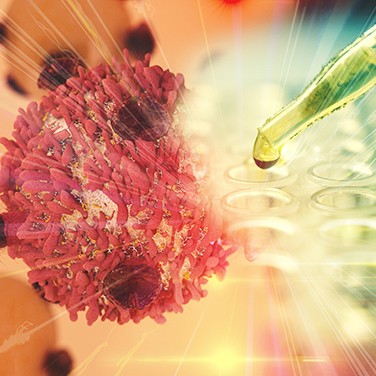Our 12 Favorite Scientific Breakthroughs of 2018
By Christina Phillis
As we begin another year of great possibilities, let’s reflect on some of the more exciting scientific advancements of 2018. From developing innovative new cancer treatments to combatting climate change, scientists continue to make the world healthier, cleaner and safer. We hope that these successes inspire you as you embark on what will surely be another year full of discoveries and progress.
- Erasing the Damage of Alzheimer’s Disease
By altering the structure of the apoE4 protein and rendering it harmless in the laboratory, scientists were able to reverse the effects of Alzheimer’s disease in human stem cell cultures. - Hope for Sickle Cell Patients
Doctors have been able to successfully “cure” sickle cell anemia by using a new protocol that requires only half of the patient’s HLA markers be matched with a stem cell donor. - Microchips That Detect Chemicals
Researchers from MIT created simple, tiny chips that easily detect chemicals in confined spaces. They’re small enough to be sprayed in an aerosol mist and could be used in anything from gas conduits to the human digestive tract. - A Game Changer for MS
A new treatment for multiple sclerosis was successful in all but 6% of patients, according to study results. The stem cell treatment uses chemotherapy to wipe out the patient’s immune system. It then “reboots” the system using the patient’s healthy blood and bone marrow. - Copper-Coated Uniforms
Copper-coated uniforms may be the future for hospitals trying to prevent the spread of Escherichia coli and Staphylococcus aureus, according to a new study. Even after 30 washes, the team’s copper-coated textiles maintained their antibacterial resistance. - Blindness Treatment on the Horizon
Scientists have developed a treatment for the loss of central vision caused by age-related macular degeneration. After implanting a patch of stem cells in the damaged area at the back of the eye, patients were again able to read and see faces clearly. - Growing Human Organs for Transplant
Scientists successfully created sheep embryos in the lab that are 0.01 percent human by cell count. A human-animal hybrid (called a chimera) like this lets researchers isolate stem cells from another species that can develop into any cell type in the body, an advancement that moves us closer to growing organs for medical transplant. - One Step Closer to Cloning Humans
Using somatic cell nuclear transfer, Chinese scientists have cloned monkeys. The breakthrough involved transferring the nucleus of a cell and its DNA into an egg from which the nucleus had been removed, the same process used to create Dolly the sheep. - A Cheaper Way to Combat Climate Change
A new process called direct air capture has the potential to remove and recycle carbon dioxide from the air. The method uses a chemical to capture or trap the CO2 so that it can be stored underground or used to make products and synthetic fuels. - Cancer-Fighting Robots
Scientists have developed tiny cancer-fighting robots built from DNA strands that can travel through the body’s bloodstream. When they find a tumor, they unleash an enzyme called thrombin that forms a blood clot and suffocates the tumor. - Nanofibers of Steel
A new process creates ultrafine fibers that are both strong and tough, a combination that’s difficult to produce. The fibers are measured in nanometers and present an inexpensive and easy-to-create material for protective armor and a variety of other applications. - A Fully Sequenced Wheat Genome
Scientists from the International Wheat Genome Sequencing Consortium have sequenced the genome for bread wheat. This could lead to a strain of wheat that produces greater yield and withstands stress, including the higher temperatures caused by climate change.
Reference
